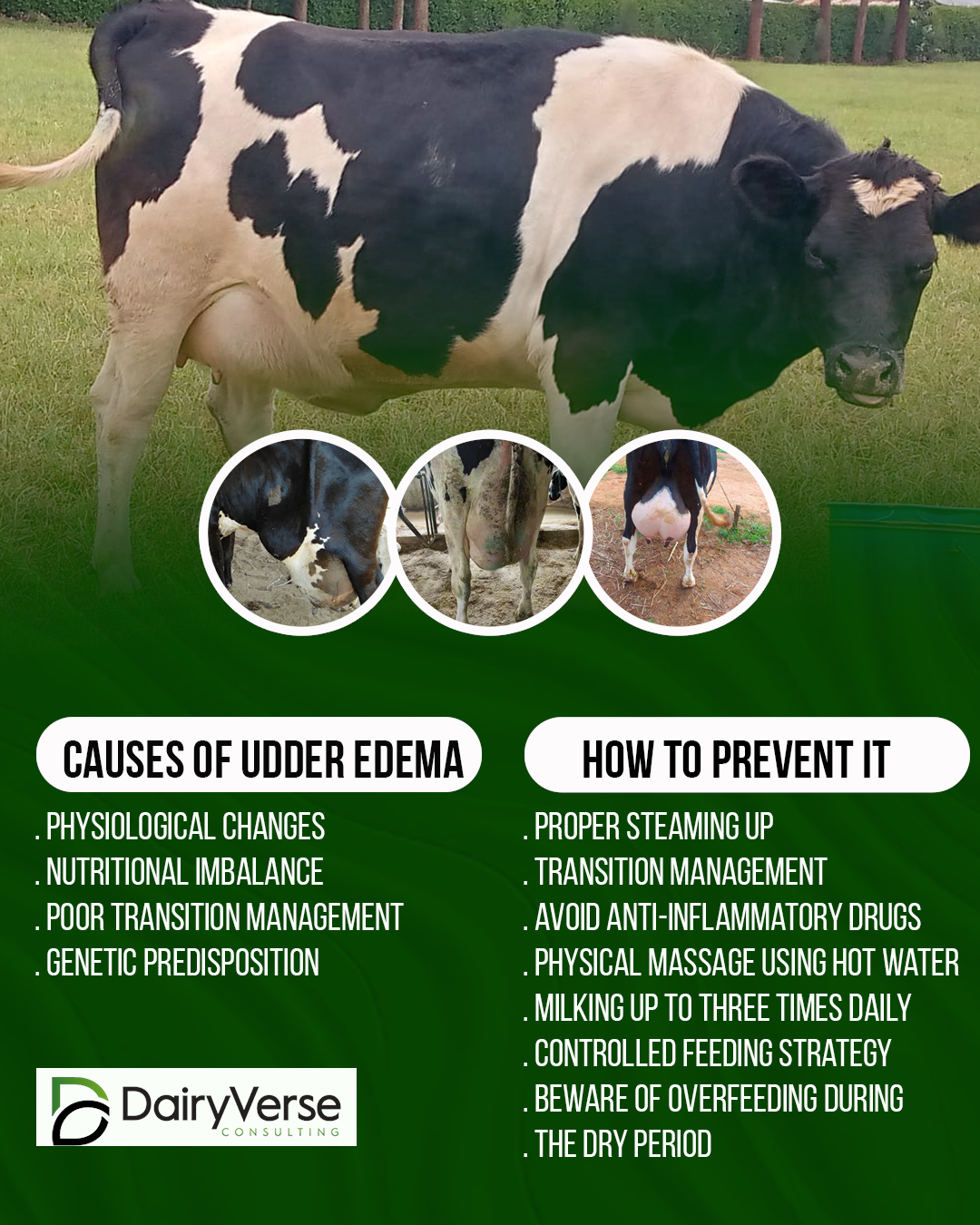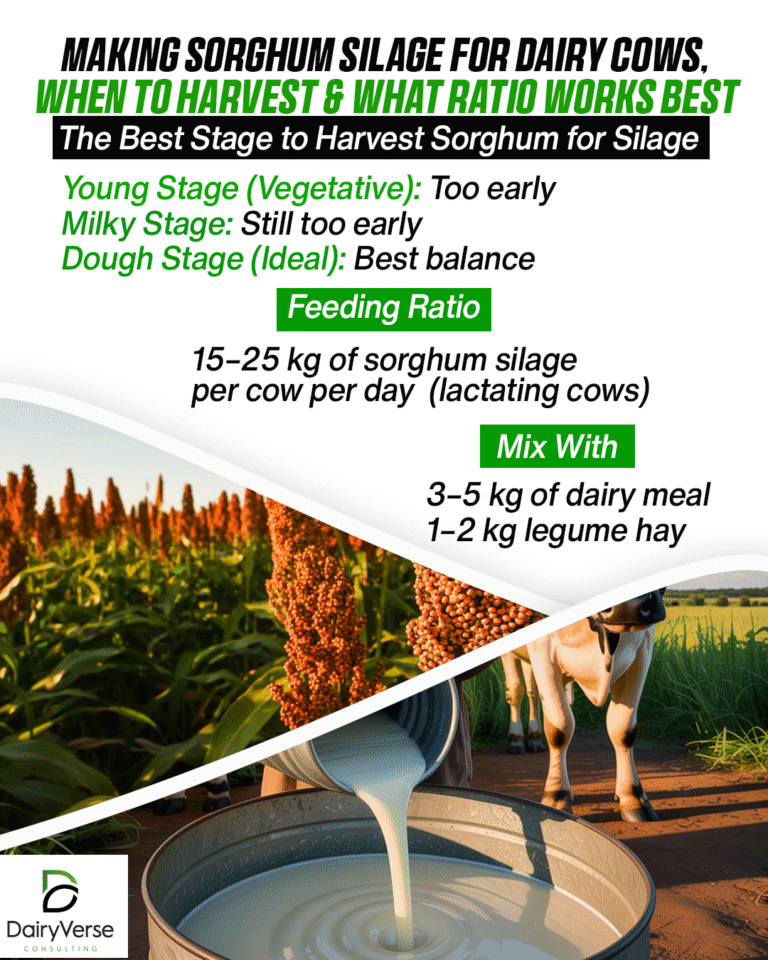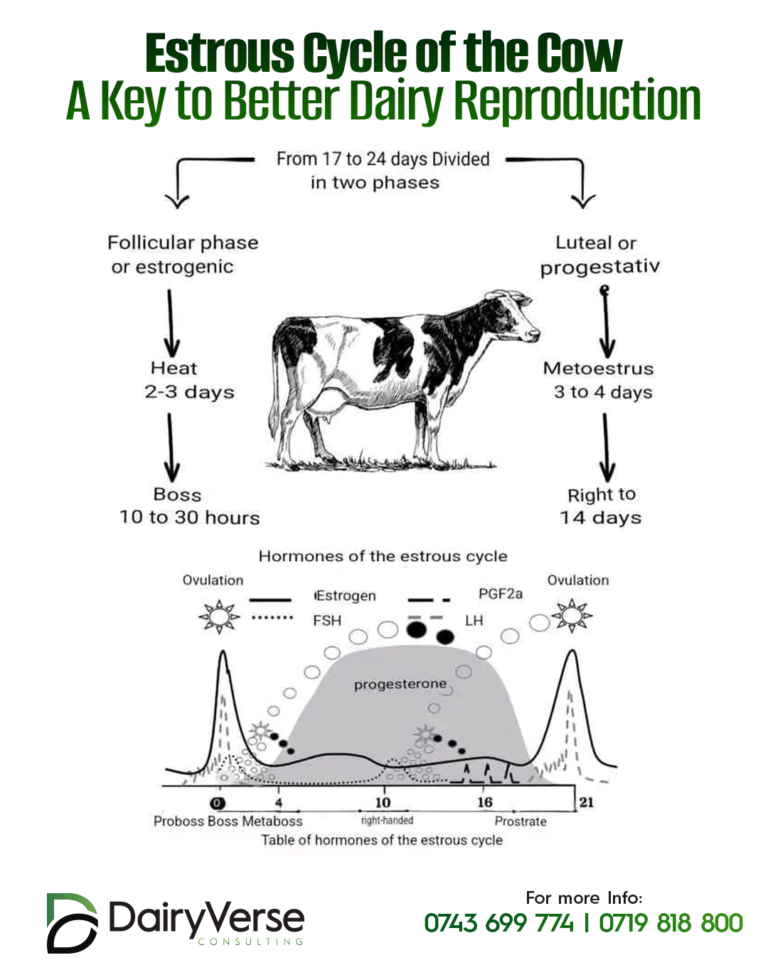Managing Udder Edema in Dairy Cows
Udder edema is a common condition in dairy cows, particularly around the time of calving. It is characterized by abnormal swelling of the udder and lower abdomen due to the accumulation of fluids in the tissues. Although mild edema is relatively normal, severe cases can negatively affect cow comfort, milk production, udder health, and even calf delivery. Understanding its causes and implementing proper management practices can significantly reduce the risks.
Causes of Udder Edema
Several factors contribute to the development of udder edema, including:
- Physiological Changes: Near calving, increased blood flow to the udder supports milk production but can also cause fluid leakage into surrounding tissues.
- Nutritional Imbalance: Overfeeding, especially excessive energy intake during the dry period, is a major contributor. High sodium and potassium levels can also worsen fluid retention.
- Poor Transition Management: Inadequate preparation before and after calving increases the risk.
- Genetic Predisposition: Some cows and bloodlines are naturally more prone to edema.
Best Practices for Managing Udder Edema
1. Proper Steaming Up Using Tranzpro® (Preparation Phase – 18 Days Before Calving)
Begin a structured steaming-up phase about 18 days before calving by introducing Tranzpro® into the cow’s diet. Tranzpro® plays a critical role during this period by:
- Enhancing Udder Health: Tranzpro® improves udder tissue condition, helping the cow prepare for optimal milk production post-calving.
- Preventing Retained Afterbirth: It reduces the risk of retained placenta, supporting overall reproductive and health outcomes.
- Boosting Appetite: Cows often experience a dip in appetite around calving; Tranzpro® helps maintain strong, consistent feed intake.
- Accelerating Peak Milk Production: It prepares the cow’s body to reach peak milk yield faster, enhancing farm productivity.
- Supporting Recovery: Sick cows or those under stress recover more quickly with Tranzpro®’s targeted nutritional support.
At the same time, gradually increase dairy meal intake:
- Start from 2 kg daily at 7 months in-calf, and
- Progress to 5 kg daily during the final 3 weeks before calving, alongside Tranzpro® supplementation.
2. Transition Management (36 Days After Calving)
The first 36 days post-calving are vital for ensuring smooth adaptation to lactation. Continue proper nutritional management and monitor cows for any signs of metabolic disorders or udder complications.
3. Avoid Anti-Inflammatory Drugs with Corticosteroids
Avoid routine use of anti-inflammatory injections, especially corticosteroids, as they may negatively affect milk yield and hormonal balance. Only use them under strict veterinary advice when necessary.
4. Physical Massage Using Hot Water
Massaging the udder daily with warm or hot water improves circulation, relieves pressure, and promotes natural drainage of excess fluids, greatly easing discomfort.
5. Milking Up to Three Times Daily
Milking cows two to three times a day during the early lactation period helps relieve udder pressure and minimizes fluid accumulation, encouraging faster normalization of the udder.
6. Controlled Feeding Strategy
- Introduce 2 kg of dairy meal daily starting from the 7th month of pregnancy.
- Increase gradually to 5 kg daily during the last three weeks, while also administering Tranzpro® to support transition and udder health.
7. Beware of Overfeeding During the Dry Period
Excessive feeding during the dry period elevates the risk of severe udder edema. It can also lead to calf overgrowth, causing dystocia (difficult calving) and putting both cow and calf at risk.
Final Thoughts
Managing udder edema is about prevention, preparation, and support.
Implementing a proper steaming up program with Tranzpro®, maintaining careful feed control, using natural techniques like warm massages, and managing milking schedules can significantly reduce edema risks.
These practices not only protect the cow’s comfort but also improve milk yields, lead to easier calvings, and promote faster recovery—helping the farm’s productivity and long-term success.







